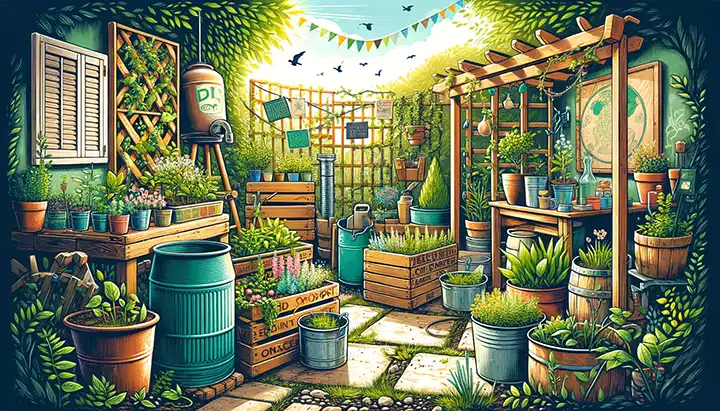Starting a garden can be a fulfilling and rewarding experience, offering a sanctuary of growth and tranquility right in your own backyard. However, the cost of plants, soil, and gardening tools can quickly add up, discouraging many potential gardeners. This guide will walk you through the steps to start a garden on a budget, focusing on cost-effective strategies and sustainable practices to get your green space flourishing without breaking the bank.
1. Plan Your Garden
Define Your Garden Goals: Start by deciding what you want from your garden. Whether it’s growing your own vegetables, creating a flower garden for pollinators, or simply adding some greenery for aesthetic appeal, your goals will guide your planning process.
Choose the Right Location: Observe your space to find an area that receives adequate sunlight (6-8 hours for most plants), has access to water, and is protected from strong winds. The right location can reduce the need for supplemental resources later on.
2. Start Small
Limit Your Initial Size: A smaller garden is easier and cheaper to manage. Begin with a few beds or containers, which you can expand as you gain confidence and resources.
Use What You Have: Before buying new gardening tools, see what you can repurpose from home. Old containers, yogurt cups, and even egg cartons can be used for starting seeds. Borrow tools you might only need once or infrequently from neighbors or friends.
3. Source Materials Wisely
Seeds and Plants: Seeds are often cheaper than plants and can offer a wider variety of options. Look for seed swaps in your community or online. Some libraries also offer free seed programs. For plants, consider buying late in the season when nurseries offer discounts.
Soil and Compost: Good soil is crucial for a healthy garden. Instead of buying expensive potting mixes, make your own compost from kitchen scraps and yard waste. If you need to buy soil, check for local giveaways or sales.
Mulch: Mulch helps retain soil moisture and suppress weeds. Instead of buying bags of mulch, look for free sources like local tree trimmings, straw from farmers, or leaves collected in the fall.
4. DIY Garden Structures
Supports and Trellises: Use bamboo sticks, old branches, or repurposed materials to create supports and trellises for climbing plants. This not only saves money but also adds a rustic charm to your garden.
Raised Beds: If you opt for raised beds, consider building them with salvaged wood, bricks, or cinder blocks. There are many tutorials online that show how to construct raised beds using minimal tools and resources.
5. Water Wisely
Conserve Water: Set up a rain barrel to collect rainwater for your garden, reducing your water bill. Water in the early morning or late evening to minimize evaporation, and use a mulch layer to keep the soil moist longer.
6. Companion Planting and Natural Pest Control
Companion Planting: Some plants can benefit each other when grown together, either by deterring pests or enhancing growth. Utilize companion planting to reduce the need for chemical pesticides and fertilizers.
Natural Pest Control: Encourage beneficial insects by planting a variety of flowers and herbs. Use natural remedies like neem oil or soapy water to manage pests instead of expensive chemicals.
7. Patience and Persistence
Be Patient: Gardens take time to establish and grow. Don’t be discouraged by initial failures; view them as learning opportunities.
Expand Gradually: As you become more experienced and your compost pile grows, you can expand your garden bit by bit without significant additional investment.
In Summary
Starting a garden on a budget requires creativity, resourcefulness, and a bit of patience. By planning carefully, utilizing available resources, and adopting sustainable practices, you can create a thriving garden that enriches your life and space without straining your finances. Remember, the most beautiful and productive gardens are often the result of time, love, and dedication rather than large investments.
